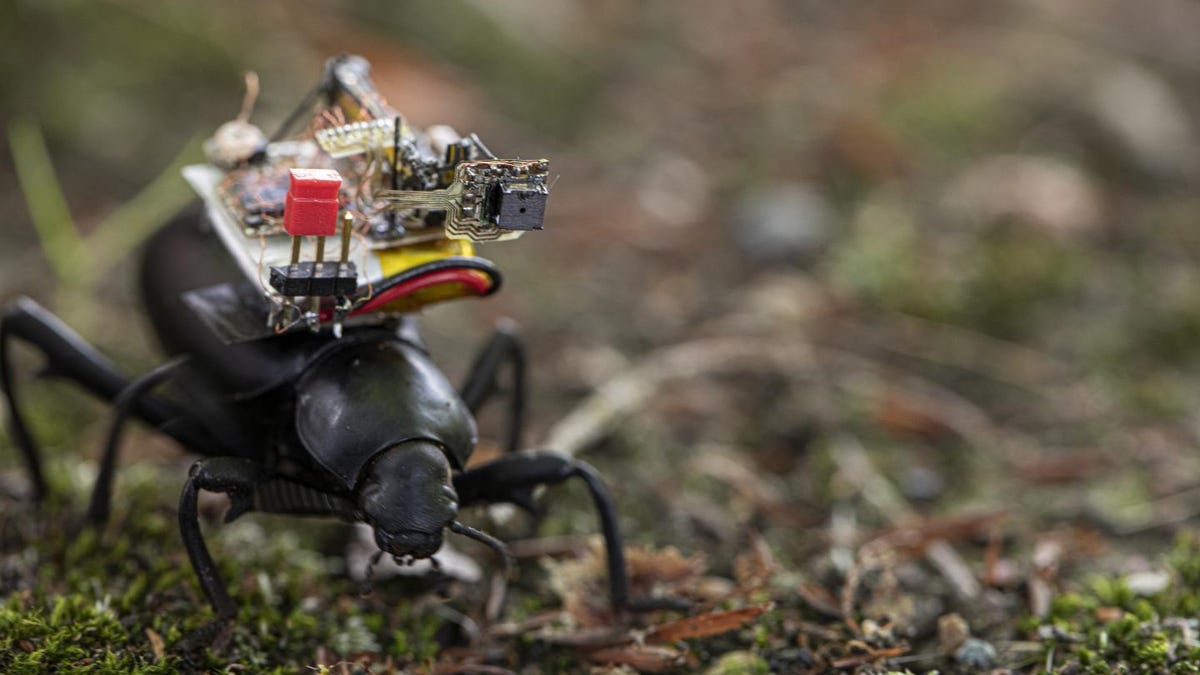Scientists fit beetles with tiny camera backpacks that reveal insect secrets
A GoPro for creepy-crawlies puts scientists at the insects' eye level.
We have a new innovation in the scientific quest to create high-tech itsy-bitsy backpacks for animals. Fruit flies, pigeons and bees have had their moments. Now it's time for beetles that wear tiny panoramic cameras.
"We have created a low-power, low-weight, wireless camera system that can capture a first-person view of what's happening from an actual live insect or create vision for small robots," said University of Washington's Shyam Gollakota, lead author of a paper on the system published in the journal Science Robotics on Wednesday.
The university released a video that highlights how the camera works by streaming black and white footage to a phone. The app also lets the researchers command the camera to rotate for panoramic views.
The team tested the backpack on a death-feigning beetle and a Pinacate beetle and monitored them to make sure they could move unfettered. The beetles didn't seem to be bothered by the small amount of extra weight and they lived for over a year after the project ended.
"This is the first time we've had a first-person view from the back of a beetle while it's walking around," said co-author Vikram Iyer.
This insect-sized robot was designed to carry the beetle backpack camera.
The camera is capable of functioning for over six hours on battery power when used with an accelerometer that triggers the camera only when the beetle moves. Future versions could use solar power.
The camera works on tiny robots as well as on insects. The researchers said they built "the world's smallest terrestrial, power-autonomous robot with wireless vision" for this project.
The low-power insect-sized robot moves through vibrations, though it has to pause its movements to take a stable image with the camera.
The camera system for beetles isn't just creepy-cute. It could help scientists learn more about insects and how they react to their environments. It could also point to a new way to gather visuals in hard-to-reach areas.
And perhaps someday we'll get a beetle version of The Blair Witch Project.


